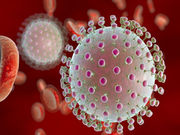Apparent resurgence of Zika virus and GBS early in 2016, but no subsequent increase in microcephaly
WEDNESDAY, March 29, 2017 (HealthDay News) — The causal links between Zika virus (ZIKV) infection, Guillain-Barré syndrome (GBS), and microcephaly need to be further clarified, according to a letter to the editor published online March 29 in the New England Journal of Medicine.
Wanderson K. de Oliveira, M.D., from the Ministry of Health in Brasilia, Brazil, and colleagues used routinely collected surveillance data and medical records to show how the spread of ZIKV in Brazil correlated with an increase in the incidence of GBS and microcephaly .
The authors note that the spread of ZIKV in Brazil correlated with an increase in the incidence of neurologic disorders, most visibly in GBS and microcephaly. In 2015, the rise and fall of suspected cases of ZIKV infection and GBS were approximately synchronous. Microcephaly incidence peaked in late November 2015, an average of 23 weeks after the start of the epidemics of ZIKV and GBS. There was an apparent resurgence of ZIKV infection and GBS early in 2016, but no further increase in cases of microcephaly later in the year. Reasons for this could include misclassification of chikungunya infection, which causes GBS but not microcephaly, as ZIKV infection; ZIKV infection during pregnancy being insufficient to cause development of microcephaly without some unknown cofactor; and fewer conceptions and/or increased terminations due to fear of the adverse consequences.
“Further investigations are needed — aided by more sensitive and specific diagnostic tools and the careful interpretation of surveillance data — to clarify the causal links between arbovirus infections, GBS, and microcephaly in Brazil,” the authors conclude.
Copyright © 2017 HealthDay. All rights reserved.








